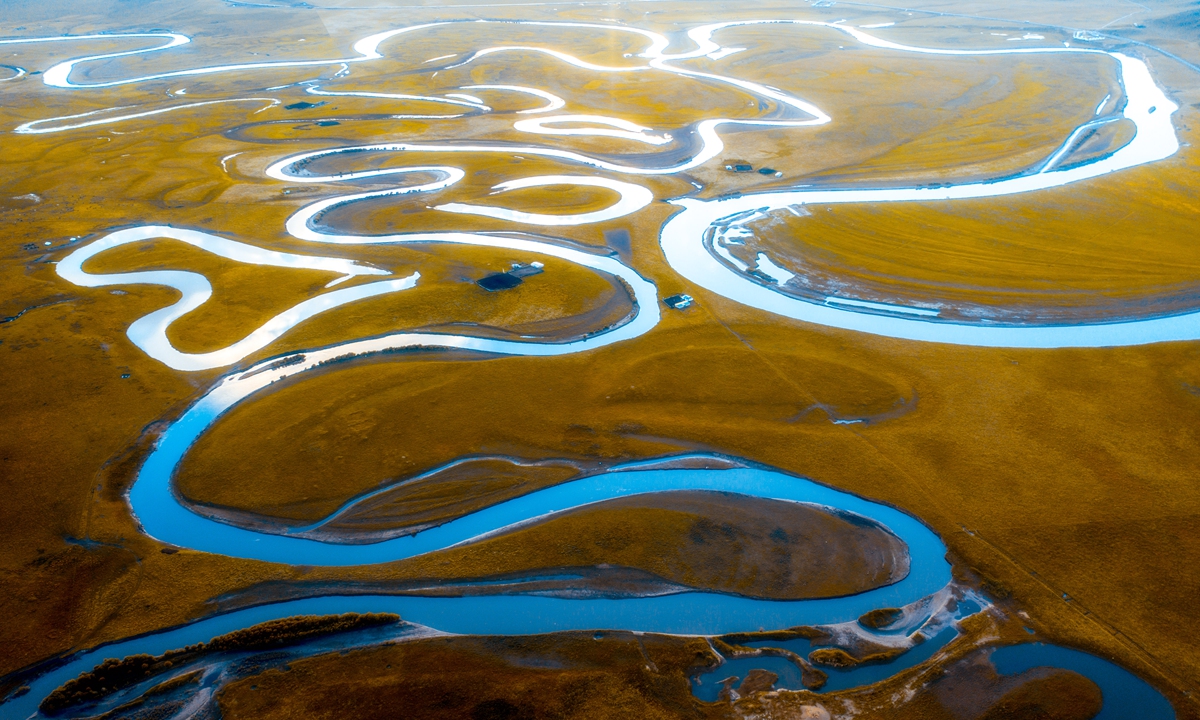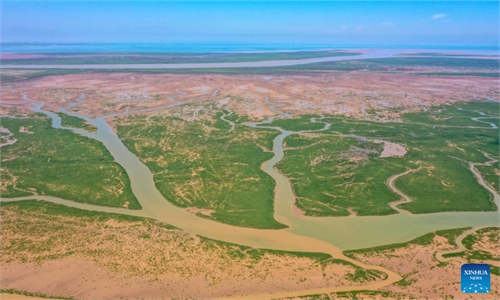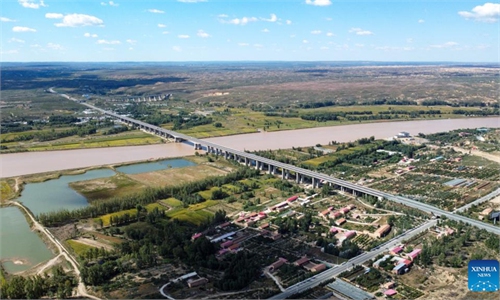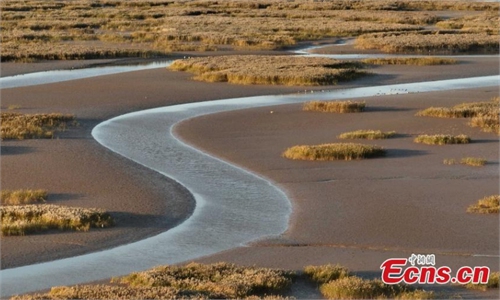Reversing environmental degradation, boosting low-carbon development along the Yellow River

An aerial view of the Yellow River upstream as it traverses the Aba Tibetan and Qiang Autonomous Prefecture in Southwest China's Sichuan Province Photo: VCG
In the past thousands of years, Chinese were always looking for a gentle Yellow River, and protecting the ecology and environment along the Yellow River has been a significant process. In the past years, the ecological conservation and high-quality development of the Yellow River Basin has seen significant development, the ecological condition of the basin improved greatly.
Although Yellow River basin only contained 2 percent of the water source in China, it provides water to 12 percent the whole population, 17 percent of the cultivated land, and over 50 cities. The utilization ratio of water resource in this basin is as high as 80 percent, which is much higher that 40 percent, the ecological warning line of river basins. The shortage of water resource is a large problem for the Yellow River.
Besides, the Yellow River Basin, from its plateau glacier, meadow steppe, to the Gobi desert and the delta region, is also fragile in ecology. It means that degeneration is easy to happen, but the ecology is hard and slow to recover.
The Yellow River Basin has seen great improvement in the ecological environment after continuous conservation efforts.
The area of soil erosion in the Yellow River Basin decreased by 48 percent in 2020, compared with 1990, and that of intense soil erosion was reduced by 83 percent, according to Xinhua.
Many places, which used to be suffering from sandstorms, saline and alkali soils, and flooding as a result of the river's dike break or course change, have shaken off poverty thanks to continuous development efforts and improvements to the environment.
Large wild animals like snow leopard, white-lipped deer, and blue sheep reappeared on the origin of Yellow River.
Furthermore, the Yellow River Basin accelerated the construction of large wind power and photovoltaic bases on desert and Gobi. The installed capacity of wind power and photovoltaic reached 140 million kilowatt and 120 million kilowatt in Yellow River Basin, accounting for 46.7 percent and 43.3 percent of the whole country's capacity.



